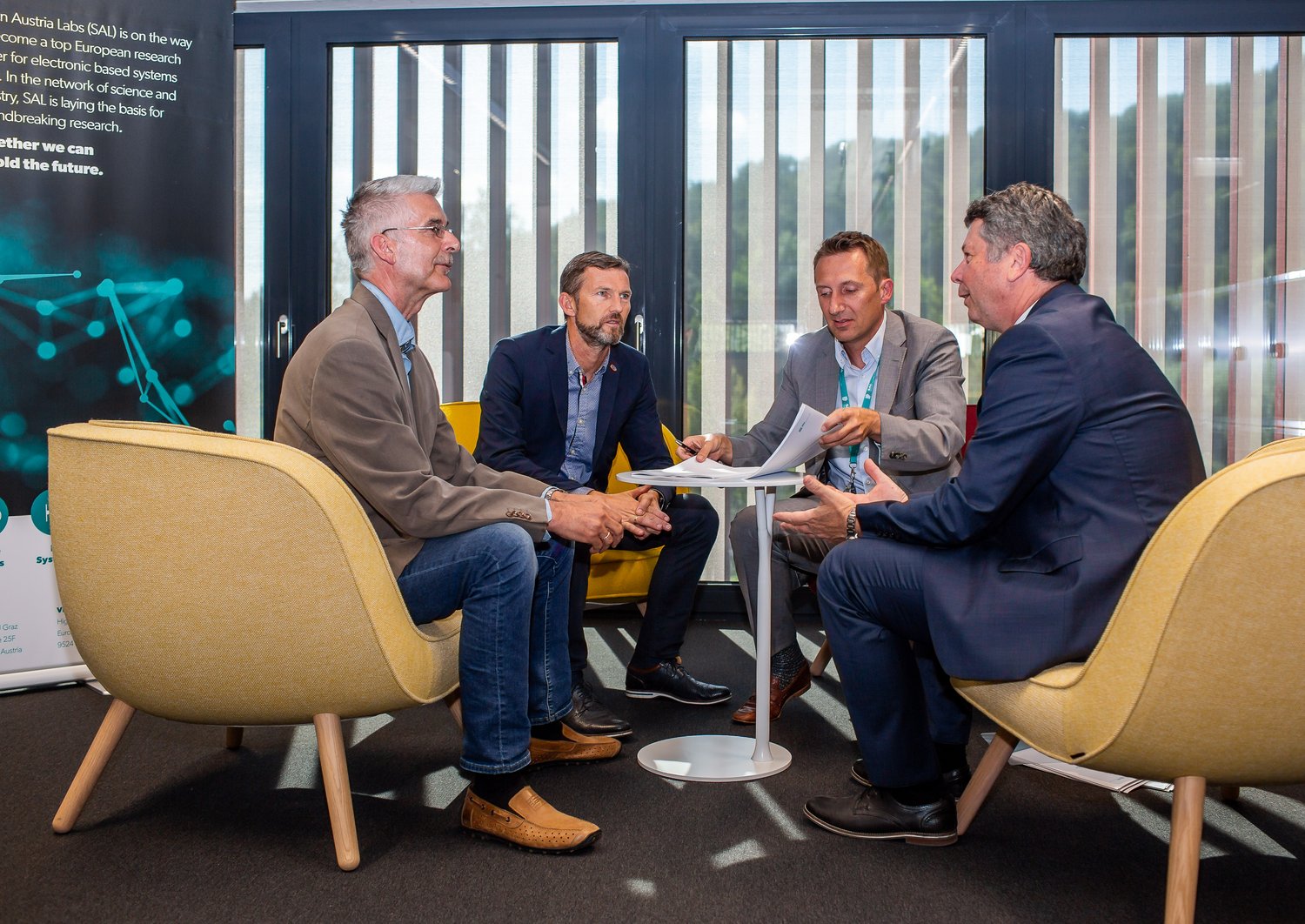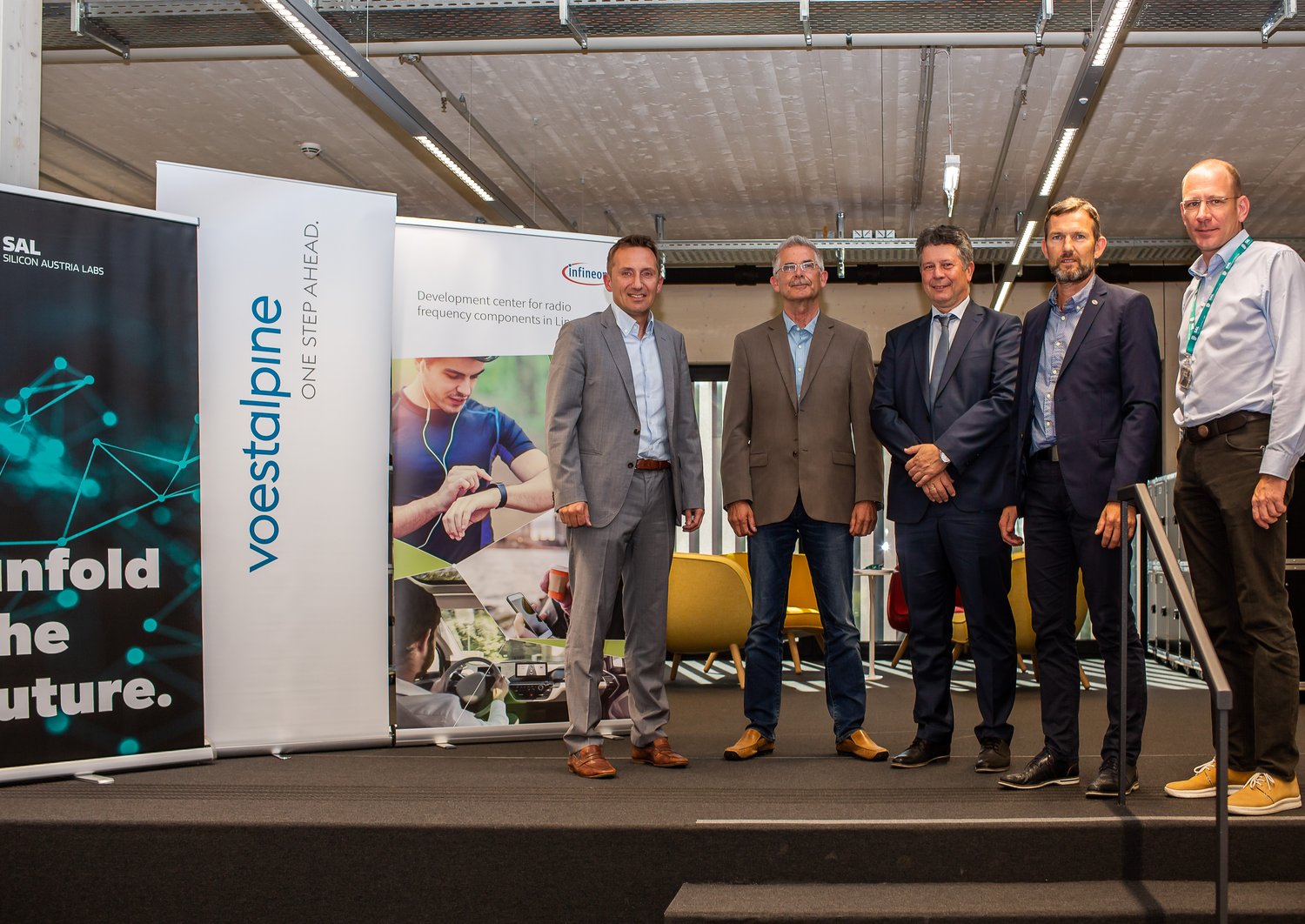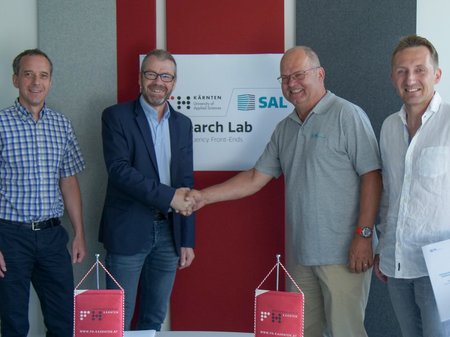Linz, 16.07.2019 – It was officially launched with the signing of the cooperation agreement by SAL, Infineon DICE, and voestalpine on Tuesday, July 16, 2019, in the new LIT Open Innovation Center on the campus of Johannes Kepler University (JKU) Linz, Austria. Not only does the project bank on the novel use of intelligent radar sensor technology for industrial applications, it also serves as a showcase for the increasing digitalization of Austria’s industry with the help of collaborative, cutting-edge research.
“SAL aims to conduct leading research worldwide for electronic based systems along the value chain, from the production of components all the way to industrial uses of electronics. We have succeeded in doing precisely that through the Radar Tomography research project,” says Thomas Lüftner, SAL Division Head for RF Systems and Site Director in Linz. “Bringing Linz-based Infineon (a worldwide leader in the development of radar chips) and voestalpine (a leading manufacturer worldwide of high-tech products made of steel and other metals that is headquartered in Linz)—two leading technology companies from very different industries—together with our top researchers will generate entirely new thought patterns and approaches to solutions that will be able to make a difference in the world market.”
RESEARCH AS GUARANTOR OF GLOBAL INNOVATION
The collaborative project entails harnessing the radar technologies in the automotive industry, which are already leading globally, for industrial applications also, turning the key concept—Industry 4.0—into reality:
“Thanks to its development center for high-frequency components in Linz, Infineon already is a trailblazer in the field of radar for automated driver assistance systems. With more than 100 million 77 GHz radar chips sold, Infineon is the technology and world market leader in this segment,” Manfred Ruhmer and Peter Zeiner, Managing Directors of Infineon DICE Danube Integrated Circuit Engineering GmbH & CoKG, are happy to report. “Research and development are key requirements in this connection to ensure that we will be at the forefront of global developments in the future too. In SAL, we’re getting a new, important partner within the nexus of science and economics. Our joint research in collaboration with SAL and voestalpine in the Radar Tomography project will open up new applications and generate new momentum for Linz as a center for high frequency research,” is how the two describe SAL’s role as a research partner for the industrial companies.
JOINTLY TAP INTO DIGITALIZATION OPPORTUNITIES
voestalpine also banks on intensive research and development activities. „The key word here for voestalpine’s success globally is innovation. With a current research budget of more than EUR 180 million, we are one of the most research-heavy companies in Austria”, Franz Androsch, Head of Research of the voestalpine Group. “The research cooperation agreement with SAL and Infineon enables us to develop answers to the future requirements of digitalization in a number of fields—whether sensor systems, high frequency, autonomous systems, machine learning, or smart factories. Going forward, the build-up of know-how in the long term through such high-value alliances will help us as a technology group to continue strengthening and expanding our leading position in the industry,” Androsch adds.
SAL’s research model thus is an important tool for tapping into the digitalization opportunities for the Austrian industrial ecosystem by working jointly with partners on the development of innovations.
By 2023, SAL will employ about 80 top researchers at the Linz site, who will conduct research on key technologies for high frequency technology in the mm wave area for radar and communications, embedded artificial intelligence, and smart factory communications.








